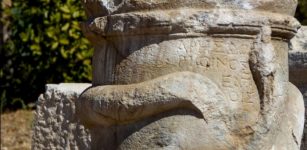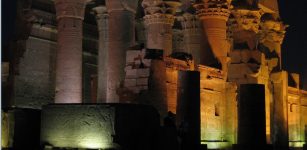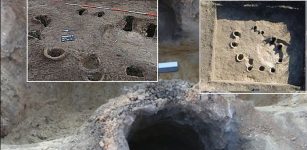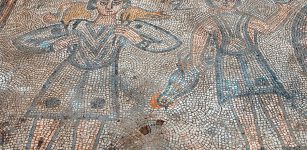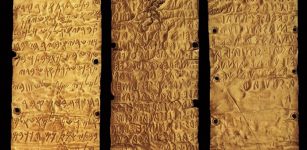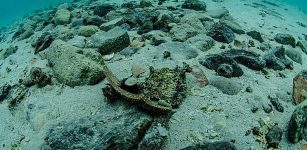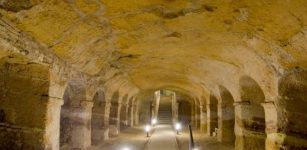First Cemetery Dated To Roman Period Discovered In North Saqqara, Egypt
Conny Waters - AncientPages.com - Egypt Today reports the discovery of an archaeological cemetery in Saqqara.
It is the first cemetery from the Roman era in this region, unearthed by a team of Egyptian-Japanese archaeologists excavating in North Saqqara.
 The Step Pyramid of Djoser (aka Netjerikhet). source
The Step Pyramid of Djoser (aka Netjerikhet). source
Led by Nozomu Kawai of Kanazawa University and Waseda University in Japan, archaeologists found a Roman catacomb tomb, spanning back to the first and second centuries AD.
The discovery was made in the old area of Saqqara, where no excavation work has been carried out before.
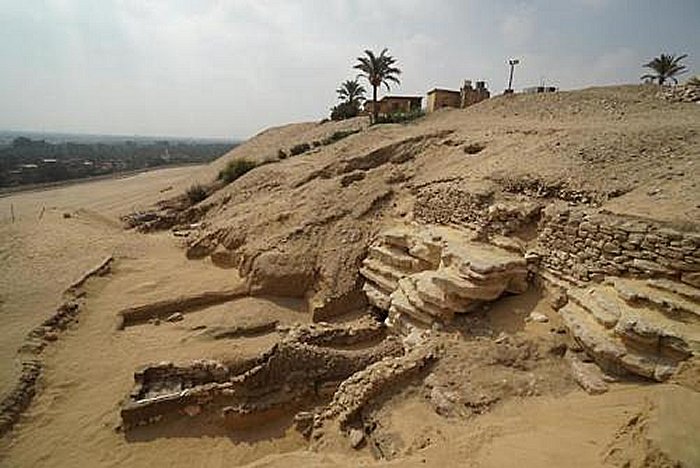 The mission found the catacombs in the area northeast the old Saqqara region, where no excavation work has been carried out before. Credit: Egypt. Ministry of Antiquities
The mission found the catacombs in the area northeast the old Saqqara region, where no excavation work has been carried out before. Credit: Egypt. Ministry of Antiquities
Saqqara has a long tradition in the history of ancient Egypt. Saqqara is a large, ancient burial ground in Egypt, serving as the necropolis for the Ancient Egyptian capital, Memphis. Many structures of Saqqara features numerous pyramids, including the world-famous Step Pyramid of Djoser, and a number of mastabas.
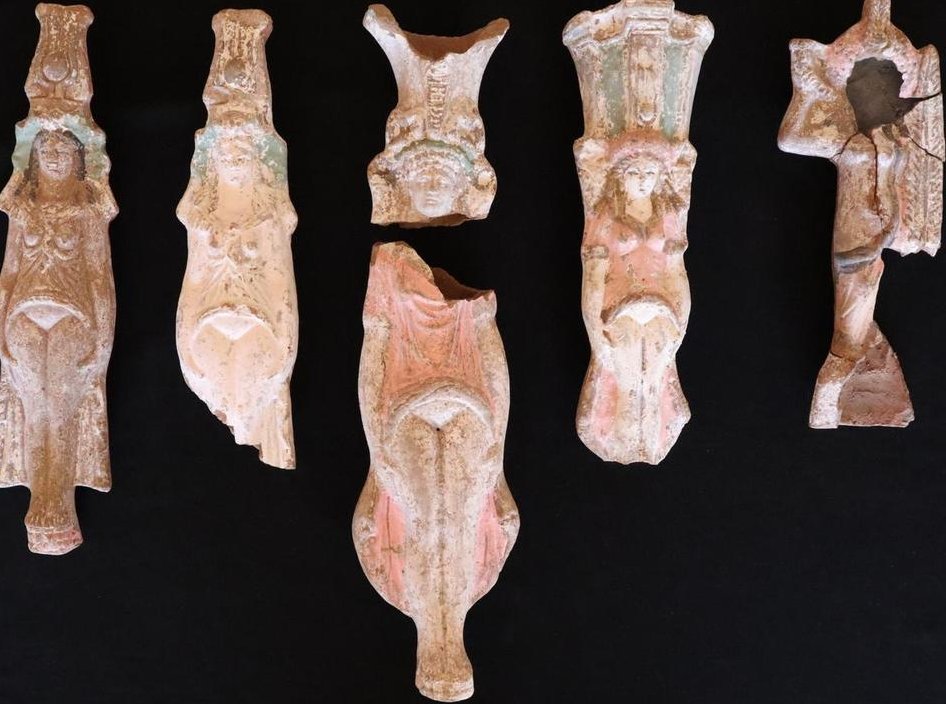 Five terracotta statues of Isis-Aphrodite were also found, in addition to a number of clay pots found by the entrance gate. Credit: Egypt. Ministry of Antiquities
Five terracotta statues of Isis-Aphrodite were also found, in addition to a number of clay pots found by the entrance gate. Credit: Egypt. Ministry of Antiquities
Located approximately 30 km (19 mi) south of modern-day Cairo, Saqqara covers an area of around 7 by 1.5 km (4.35 by 0.93 mi). With time, to several pharaonic structures, high officials added private funeral monuments to this necropolis during the entire pharaonic period.
For more than 3,000 years, the Saqqara complex remained an important complex for non-royal
burials and religious ceremonies until Ptolemaic and Roman times.
Recent excavations revealed the unearthed catacombs include a domed mud-brick building with an internal staircase and a rock carved room made of limestone, where a rock-engraved plaque with a round plate was found containing images of Sokar, Thoth and Anubis from left to right and two lines of Greek inscriptions below the picture.
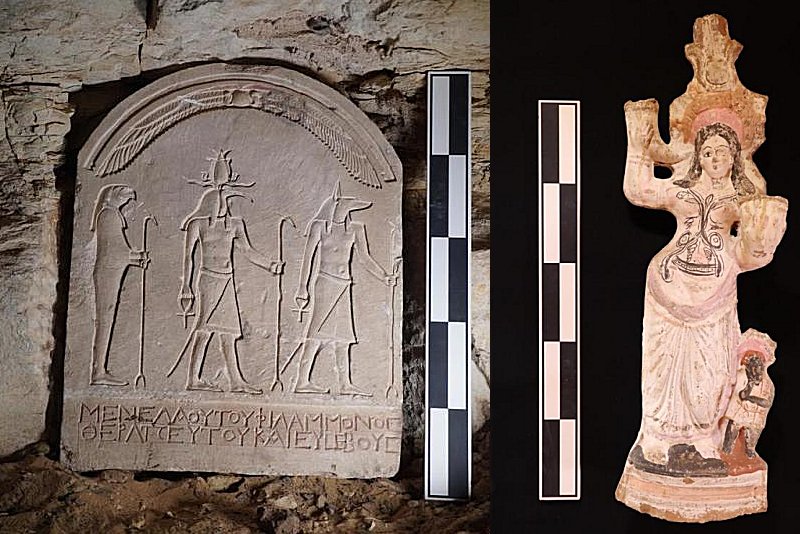 Credit: Egypt. Ministry of Antiquities
Credit: Egypt. Ministry of Antiquities
Five terracotta statues of Isis-Aphrodite were also found, in addition to a number of clay pots found by the entrance gate. Isis-Aphrodite is a certain form of the great goddess Isis that emphasizes the fertility aspects associated with Aphrodite. She was associated with marriage and childbirth, and rebirth.
The team also found two statues of lions made of limestone. Each statue is about 55 cm in length.
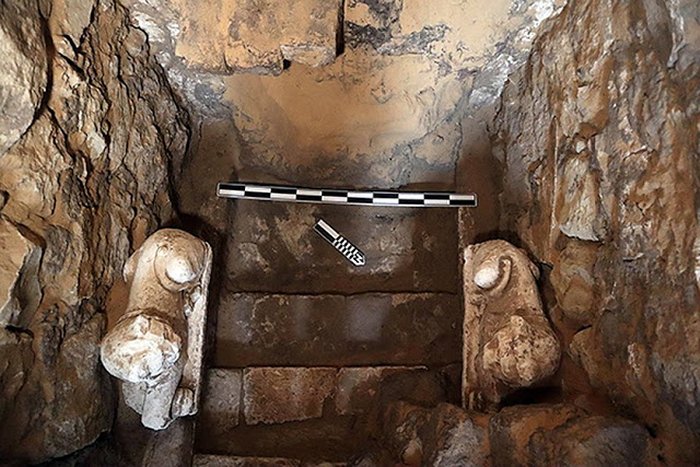 Credit: Egypt. Ministry of Antiquities
Credit: Egypt. Ministry of Antiquities
The mission had found the rock-carved room outside the entrance gate. The room consists of a long hall of about 15 meters in length and about 2 meters in width, with a number of small chambers carved on the sidewalls.
Inside the carved chambers, a large clay statue of Isis-Aphrodite was discovered in addition to a number of mummies.


